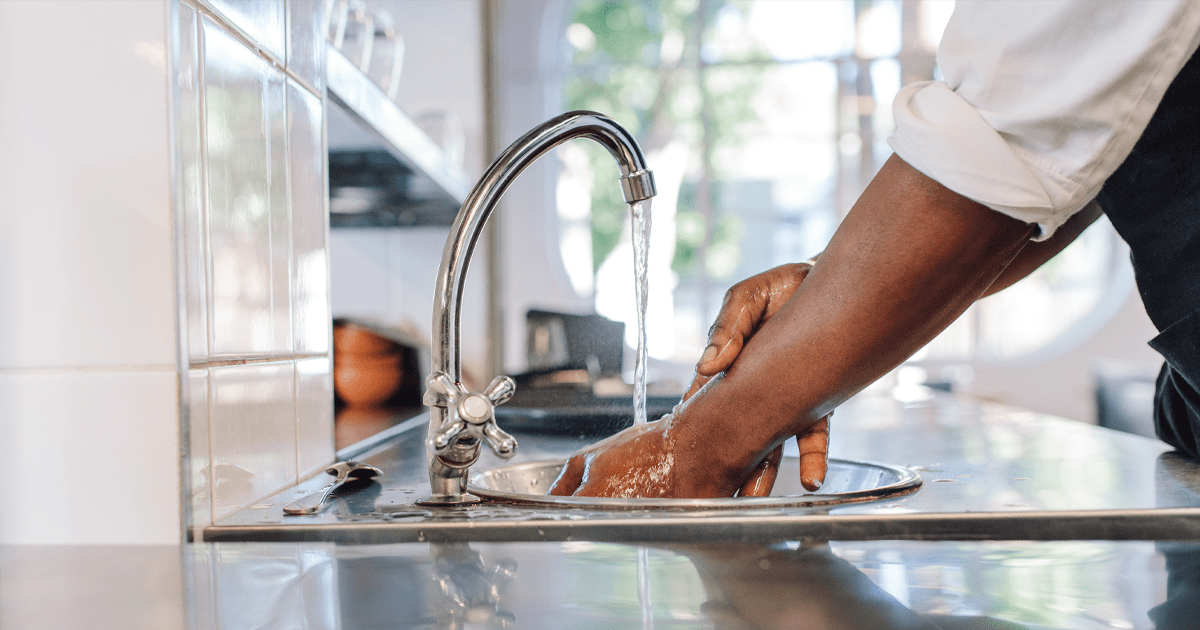The kitchen is the heart of every home, including long-term care communities. For residents and staff alike, preparing and eating a meal with peers is a way to start and end the day on a positive note. However, when your dining room and kitchen area aren’t operating at their best, the entire culinary experience could be compromised. Keeping these spaces clean, organized, and safe helps prioritize staff well-being and resident comfort.
Because staff in this area often have multiple roles, cooking delicious and nutritious meals, maintaining hygiene standards, and serving residents can be challenging to balance. That’s why doing this is a team effort, meaning that everyone contributes to the upkeep of a well-maintained kitchen – and to limit the chances of improperly stored or prepared food and anyone potentially getting hurt.
At Culinary Services Group, safety is our top priority. Here’s a list of tips we’ve collected through our experience working with the kitchens in long-term care communities like yours.
Injury Prevention
Injuries are frequently cited as the reason why kitchen staff miss work. In fact, in 2021, the Bureau of Labor Statistics (BLS) indicated that there were 2.6 illness or injury cases per 100 full-time workers. Some of the most common kitchen injuries (and safety risks) are:
- Slips and Falls: Keep all floors in the kitchen dry, immediately cleaning up any spills or wet areas – even damp areas caused by freezers, coolers, or refrigerators. After cleaning, give the floor an appropriate amount of time to dry before allowing people back in the kitchen. Employees should also wear non-slip shoes and have access to non-skid mats to prevent accidents. If an employee is lifting anything heavy, they should have a clear pathway to deliver what they’re carrying.
- Burns: Any exposure to a hot surface could result in a burn injury. Employees should use an oven mitt, pot holder, or protection against moving hot pans or things in the oven while preparing meals. If someone gets burned, have a first-aid kit handy to bandage and treat it appropriately.
- Cuts: A cut or laceration is one of the most common kitchen injuries. To reduce the risk of cut-related injuries, provide cutting-friendly gloves to all employees preparing food, and have explicit instructions for storing knives or other sharp objects.
- Exposure to Chemicals: Although less likely than other kitchen injuries, employees should take precautions when exposed to different chemicals or cleaners. Because cleaning is essential for maintaining safety and hygiene standards, it’s crucial to have protective gear and equipment for employees to wear and use when cleaning. Also, be sure to provide instructions on what cleaning solutions and chemicals are used for and hazardous chemical combinations.
Stopping the Spread of Germs
The Centers for Disease Control and Prevention (CDC) reports that 1 in 6 people in the U.S. gets sick from contaminated food or drink. An outbreak of a foodborne illness can be a nightmare for long-term care communities, as older adults often have weakened immune systems – putting them at higher risk of getting sick. To stop the spread of germs, make the following practices mandatory in your kitchen:
- Hand Washing: All employees should wash their hands before handling food or beverages. Health and safety standards require anyone working with food to wear gloves to prevent contamination.
- Sanitizing Work Surfaces and Prep Areas: Create a sterile kitchen environment by cleaning food-facing surfaces like countertops and prep materials by cleaning them before and after every use. Our F-tag compliance blog has more information about this!
- Proper Labeling: Keeping up with identifying food items, their expiration dates, and any allergen information reduces the chance of spoilage. This reduces the risk of cross-contamination and potential health hazards for staff and residents.
- Illness Policy: Have an illness policy that encourages employees not to come to work if they are sick. With the continued fluctuation of the COVID-19 virus, flu, common cold, and other illnesses, employees need to remain healthy while they’re around residents – and their meals.
Fire Safety
Even though we think fires can’t ever happen in our kitchens, they’re actually a huge risk to facilities serving large populations. With grease fires being the most common type of fire in kitchens, having the appropriate fire suppression systems is essential to prevent an emergency. All employees should know how to operate a fire extinguisher, contact information for the local fire departments, and basic fire safety information like:
- Regularly inspect fire safety equipment to ensure it’s in working order and up to code.
- Keep flammable items away from fire sources.
- Never leave any open flame unattended.
Maintaining Medical Records
Allergies can affect anyone at any time; however, the most significant risk comes when a person’s allergies aren’t properly identified. Maintaining accurate allergy records for all employees and medical records for residents helps to ensure that everyone in the kitchen and dining room avoids coming into contact with something that could harm them.
Educating Staff About Kitchen Safety With a Food Service Management Partner
Part of our Culinary Promise is keeping your kitchen a safe place. In addition to providing your community with a fresh approach to food service, our experts work to help you ensure that each employee is well-versed in food hygiene and safety practices. As a bonus, this also helps maintain F-tag compliance – something mandatory for everyone in long-term care. So, are you ready to minimize injuries and increase safety in your community? Contact us to learn more about our food service management programs, plans, and safety education.








